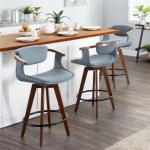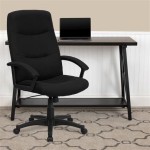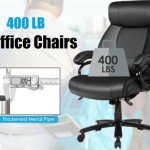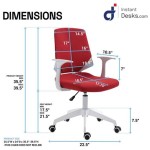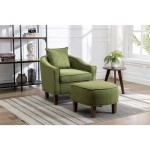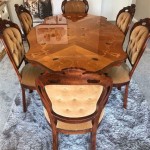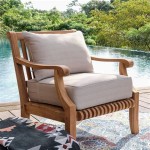Heavy Duty Outdoor Plastic Chairs: Durability and Versatility for Outdoor Seating
Heavy-duty outdoor plastic chairs represent a practical and cost-effective seating solution for a variety of outdoor environments. These chairs are engineered to withstand the elements and frequent use, making them suitable for residential patios, commercial establishments, and public spaces. Their construction focuses on durability, weather resistance, and ease of maintenance, addressing the specific needs of outdoor applications.
The utilization of plastics in outdoor furniture offers significant advantages over traditional materials like wood or metal. Plastics resist moisture, preventing rot, rust, and corrosion. This intrinsic property reduces the need for extensive maintenance and extends the lifespan of the chairs. Furthermore, the manufacturing process allows for a wide range of designs, colors, and textures, offering aesthetic versatility to complement diverse outdoor settings.
Material Composition and Structural Integrity
The performance of a heavy-duty outdoor plastic chair is fundamentally linked to the type of plastic used and the chair's structural design. Common materials include polypropylene, polyethylene, and polycarbonate. Each material possesses unique characteristics that influence the chair's strength, flexibility, and resistance to environmental factors.
Polypropylene is a widely used thermoplastic polymer known for its high strength-to-weight ratio and resistance to chemical solvents, acids, and bases. It is also relatively inexpensive, making it a popular choice for mass-produced outdoor furniture. Polypropylene chairs are typically lightweight and easy to move, but they may be susceptible to UV degradation over prolonged exposure to sunlight without proper UV inhibitors.
Polyethylene, another common thermoplastic, is known for its flexibility and impact resistance. High-density polyethylene (HDPE) is often used in outdoor furniture due to its increased strength and durability compared to low-density polyethylene (LDPE). HDPE is also resistant to moisture, insects, and rot, making it ideal for outdoor applications. Chairs made from HDPE can withstand significant weight and are less likely to crack or break under stress.
Polycarbonate is a high-performance thermoplastic characterized by its exceptional strength, impact resistance, and optical clarity. While less common in mass-market outdoor chairs due to its higher cost, polycarbonate is used in premium chairs that require superior durability and transparency. Polycarbonate chairs can withstand extreme temperatures and are highly resistant to shattering, making them suitable for demanding environments.
Beyond the material itself, the structural design plays a crucial role in the chair's overall strength and stability. Features such as reinforced legs, cross bracing, and strategically placed ribs enhance the chair's ability to withstand weight and distribute stress evenly. One-piece molded designs eliminate weak points caused by joints or fasteners, further increasing the chair's structural integrity.
Weather Resistance and UV Protection
Outdoor furniture is constantly exposed to the elements, including sunlight, rain, wind, and temperature fluctuations. Therefore, weather resistance is a critical consideration when choosing heavy-duty outdoor plastic chairs. The ability of the chair to withstand these environmental stressors directly impacts its longevity and appearance.
UV radiation from sunlight can cause plastic to degrade over time, leading to discoloration, cracking, and reduced strength. To mitigate this effect, manufacturers often incorporate UV inhibitors into the plastic compound during the manufacturing process. These inhibitors absorb or reflect UV radiation, protecting the plastic from damage. The effectiveness of UV inhibitors varies depending on the type and concentration used. Chairs with higher levels of UV protection are better suited for sunny climates or exposed locations.
Moisture resistance is another essential factor. Plastic chairs inherently resist water absorption, preventing rot and decay. However, some plastics are more susceptible to water damage than others. For example, some types of polypropylene can become brittle when exposed to prolonged moisture. HDPE and polycarbonate offer superior moisture resistance, making them ideal for humid or rainy environments.
Temperature fluctuations can also affect the performance of outdoor plastic chairs. Extreme heat can cause some plastics to soften and deform, while freezing temperatures can make them brittle and prone to cracking. Chairs made from high-quality plastics with appropriate additives are better able to withstand a wide range of temperatures without compromising their structural integrity.
Maintenance and Cleaning Procedures
One of the key advantages of heavy-duty outdoor plastic chairs is their ease of maintenance. Unlike wood or metal furniture that requires regular sanding, painting, or rust removal, plastic chairs can be cleaned quickly and easily with common household products. Regular cleaning helps to maintain their appearance and prevent the buildup of dirt, grime, and mildew.
For general cleaning, a simple solution of soap and water is usually sufficient. Mild detergents can be used to remove stubborn stains or dirt. A soft cloth or sponge is recommended to avoid scratching the surface of the plastic. For textured or heavily soiled chairs, a scrub brush can be used to loosen dirt and debris. It's important to rinse the chairs thoroughly with clean water after cleaning to remove any soap residue.
For more stubborn stains, such as mildew or algae, a solution of diluted bleach can be used. However, it's important to test the solution on an inconspicuous area of the chair first to ensure that it doesn't cause discoloration or damage. Bleach can be harsh on some plastics, so it should be used sparingly and rinsed off immediately. Always wear gloves and eye protection when handling bleach solutions.
Pressure washing can also be an effective way to clean outdoor plastic chairs, but caution should be exercised to avoid damaging the plastic. Use a low-pressure setting and a wide spray nozzle to prevent etching or cracking the surface. Avoid holding the nozzle too close to the chair, as this can concentrate the force of the water and cause damage. Always test a small area first to ensure that the pressure washer is not too powerful.
To prevent dirt and grime from accumulating, it's a good idea to clean outdoor plastic chairs regularly, especially after periods of heavy use or exposure to harsh weather conditions. Covering the chairs when not in use can also help to protect them from the elements and reduce the need for frequent cleaning.
In summary, heavy-duty outdoor plastic chairs offer a durable, weather-resistant, and low-maintenance seating solution for various outdoor applications. The choice of material, structural design, and UV protection are crucial factors that influence the chair's performance and longevity. Regular cleaning and proper maintenance can further extend the lifespan of these chairs and ensure that they continue to provide comfortable and reliable seating for years to come.

Moby Thermoplastic Outdoor Suitable Stacking Chair Cafe Reality

Supreme Net Heavy Duty Plastic Chair For Home Office And Garden Outdoor Price In Buy

Sunnydaze Plastic All Weather Heavy Duty Outdoor Adirondack Patio Chair With Drink Holder Blue And Black 2pk

Supreme Net Heavy Duty Plastic Chair For Home Office And Garden Outdoor Price In Buy

Heavy Duty Pp Plastic Chair Commercial Quality For Outdoor Events Stackable Made In Com

Semco Rockaway Heavy Duty All Weather Low Maintenance Easy Assembly Plastic Outdoor Rocking Chair For Deck And Patio Green 4 Pack

Heavy Duty Outdoor Armless Plastic Stacking Chair Chairs Stackable Made In Com

Dura Patio Heavy Duty Red Plastic Adirondack Chair With Extra Wide Seat Taller Back Cup Holder And 400 Lb Weight Capacity Dphdred The Home

Heavy Duty Norfolk Chair With 150kg User Weight Ratings

Heavy Duty Dezi Chair Just Plastics
